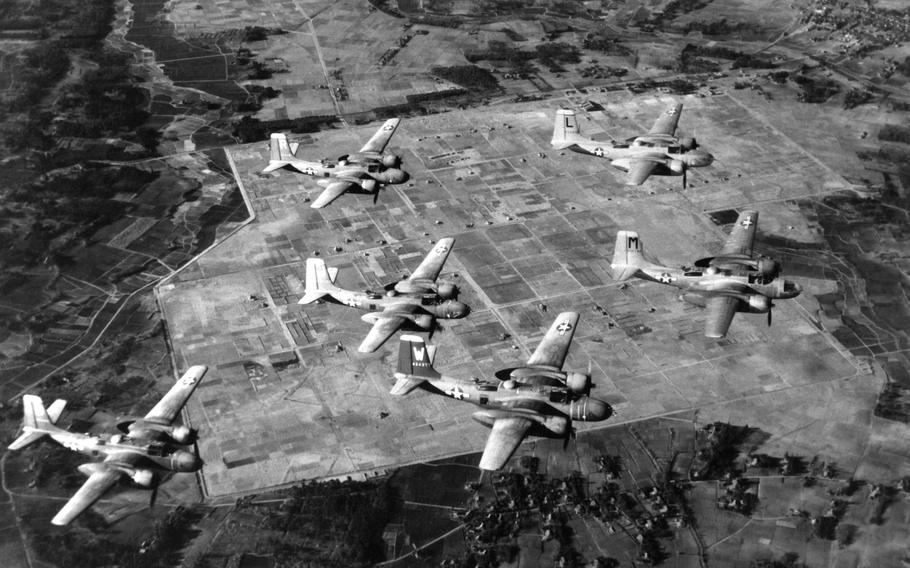
U.S. Air Force B-26 Invaders on a training flight over Japan on July 11, 1950. (Wikimedia Commons)
CAMP HUMPHREYS, South Korea — Teams from the U.S. and South Korea tasked with recovering wartime remains launched a joint underwater search in South Korea this week for a bomber and its crew that crashed during the 1950-53 Korean War.
Twenty-two divers and underwater archaeologists from the U.S. Defense POW/MIA Accounting Agency and the South Korean Agency for Killed in Action Recovery Identification, or MAKRI, started searching Tuesday for a U.S. B-26 Invader off Haeundae Beach in Busan, according to a Ministry of National Defense news release.
Investigators are using sonar equipment and magnetic detectors to comb through 4.6 square-miles of water until the search ends Sept. 27, the ministry said Tuesday. South Korea’s navy and coast guard will provide weather information and logistical support throughout the investigation.
Three crew members of the B-26 assigned to the 5th Air Force are believed to have died when their aircraft crashed into the sea after taking off from the K-9 Busan East Air Base in January 1953, according to the ministry.
During the war, the B-26 initially carried up to 6,000 pounds of bombs on daylight raids on North Korean targets, according to the National Museum of the U.S. Air Force. However, enemy antiaircraft weapons and Soviet-era MiG-15 fighter jets prompted its crews to turn to nighttime missions using infrared detection equipment.
The underwater survey is being conducted with a “sense of duty” to account for the service members who died, DPAA team leader Patrick Hennessy said in the release. “If there is even a faint possibility, we will not give up and focus on all of our capabilities.”
The joint effort will also strengthen future projects between the two agencies and bring to light those who “protected the freedom and prosperity” of South Korea, MAKRI manager Lee Gueun-won said in the release.
The two agencies have worked together to find, identify and repatriate Korean War-era human remains since 2011. Nearly 700 U.S. service members missing from the Korean War have been accounted for, but around 7,460 are still missing, according to the DPAA.
U.S. Army Pvt. 1st Class Arlie Barrett of the 24th Infantry Division was most recently accounted for by the DPAA on June 7, according to an agency news release Aug. 22.
The 19-year-old Bluff City, Tenn., native was declared missing after his unit fought North Korean troops on Aug. 10, 1950. His then-unidentified remains were recovered four months later and buried in the National Memorial Cemetery of the Pacific in Honolulu, Hawaii.
His remains will be exhumed and reburied Sept. 27 in Mountain Home, Tenn., according to the DPAA release.